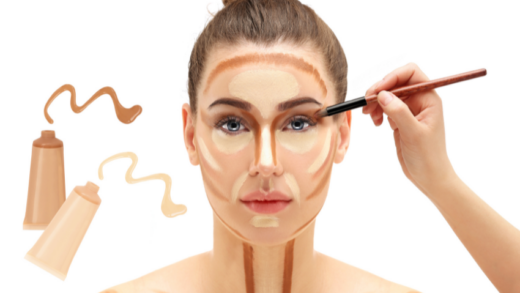Choosing the right foundation can be a daunting task, especially when you’re faced with endless options. With so many brands, shades, textures, and finishes, it’s easy to feel overwhelmed and end up with a product that doesn’t meet your expectations. However, finding the perfect foundation is essential for achieving a flawless and natural-looking complexion. Whether you have oily, dry, or combination skin, this article will guide you through the process of selecting the right foundation for your skin type and tone.
Know Your Skin Type
Before you start shopping for foundation, it’s crucial to know your skin type. This will help you select a product that caters to your specific needs and doesn’t exacerbate any existing issues. Here are the four basic skin types:
Oily Skin
If you have oily skin, look for foundations that offer a matte or semi-matte finish. Avoid products that contain oil or have a dewy finish, as they can make your skin look greasy and shiny.
Dry Skin
For dry skin, go for foundations with a hydrating formula that provides moisture to your skin. Look for products with a satin or luminous finish that gives your skin a dewy glow.
Combination Skin
Combination skin can be tricky to manage. Look for a foundation that’s oil-free and lightweight. It should provide coverage for your oily areas while hydrating your dry patches.
Sensitive Skin
Sensitive skin can react to certain ingredients found in foundation. Look for products that are hypoallergenic, fragrance-free, and non-comedogenic. Avoid formulas that contain irritants such as alcohol, fragrances, or preservatives.
Determine Your Skin Undertone

Knowing your skin undertone is essential when choosing foundation. It will help you select a shade that matches your skin and doesn’t look too orange or pink. Here are the three types of skin undertones:
Warm Undertone
If your skin has a yellow or golden undertone, you have a warm undertone. Look for foundations with shades that have yellow or golden tones.
Cool Undertone
If your skin has a pink or bluish undertone, you have a cool undertone. Look for foundations with shades that have pink or blue tones.
Neutral Undertone
If your skin has a mix of warm and cool undertones, you have a neutral undertone. Look for foundations with shades that are a blend of warm and cool tones.
Consider Your Coverage Needs
The level of coverage you need depends on your skin concerns and personal preference. Here are the three types of coverage:
Sheer Coverage
Sheer coverage foundation is ideal for those with minimal skin concerns. It provides a light veil of coverage that evens out your skin tone and gives you a natural-looking finish.
Medium Coverage
Medium coverage foundation is suitable for those with mild to moderate skin concerns. It covers imperfections, redness, and blemishes while still allowing your skin to breathe.
Full Coverage
Full coverage foundation is perfect for those with severe skin concerns such as acne, scarring, or hyperpigmentation. It provides complete coverage and gives you a flawless finish.
Choose the Right Formula
The formula of your foundation plays a significant role in achieving the desired finish and staying power. Here are the different types of foundation formulas:
Liquid Foundation
Liquid foundation is the most common type of foundation. It’s versatile and available in different finishes, coverage levels, and formulas. It’s suitable for most skin types, depending on the specific formula.
Powder Foundation
Powder foundation is ideal for those with oily skin or who prefer a matte finish. It’s easy to apply and provides buildable coverage.
Cream Foundation
Cream foundation is ideal for those with dry skin or who want a dewy finish. It’s hydrating and provides medium to full coverage.
Stick Foundation
Stick foundation is perfect for those who want a quick and easy application. It’s also convenient for on-the-go touch-ups. It’s available in different formulas and finishes.
Test and Try On
Once you’ve narrowed down your options, it’s time to test and try on the foundations. Here are some tips:
Test the Shade
Test the shade on your jawline, neck, or chest to ensure it matches your skin tone. Avoid testing on your hand or wrist, as they might not match your face’s color.
Test the Coverage
Test the coverage on the areas where you need it the most, such as redness or blemishes. Ensure it covers the imperfections without looking cakey or heavy.
Check the Finish
Check the finish in different lighting conditions, both natural and artificial. Ensure it gives you the desired finish, whether matte, dewy, or luminous.
FAQs
Can I use the same foundation all year round?
Your skin’s needs may change throughout the year, so it’s best to switch up your foundation based on the season and your skin type.
Should I apply foundation with a brush, sponge, or fingers?
It depends on your personal preference and the formula of your foundation. A brush or sponge provides a more even application, while fingers can give a more natural finish.
How often should I replace my foundation?
It’s recommended to replace your foundation every six to twelve months, depending on the formula and expiration date.
Can I mix different foundations to customize my shade?
Yes, you can mix different foundations to create your perfect shade or customize the finish and coverage.
Can I use foundation as a concealer?
Yes, you can use foundation as a concealer by applying it to the areas where you need more coverage.
Conclusion
Choosing the right foundation can be a game-changer in achieving a flawless and natural-looking complexion. By knowing your skin type, undertone, coverage needs, and formula preference, you can select the perfect foundation for your needs. Testing and trying on the foundation before purchasing is also essential to ensure it matches your skin tone, coverage needs, and finish preference. With these tips and tricks, you can confidently choose the foundation that suits your needs and gives you the desired finish.























